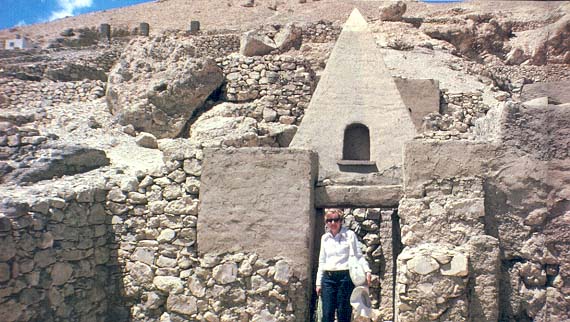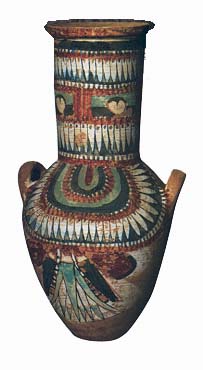The Workers’ Tombs
Sidebar to: Pharaoh’s Workers: How the Israelites Lived in Egypt

Just outside the walls of their village, the wealthiest workers at Deir el-Medina built their own tombs—albeit on a much smaller scale than those they constructed for the pharaohs. While the royal tombs in the Valley of the Kings could cover 4,000 square feet and could hold 100 bodies, the 200-square-foot tombs of the workers at Deir el-Medina served as the resting place for only four to six people, including children who died young.

The workers’ tombs were typically marked by small, steep brick pyramids topped by a stone pyramidion, or miniature pyramid, as shown in a reconstructed tomb from Deir el-Medina (above).a These pyramids contained a tiny aboveground chapel in which were recorded the images and names of the persons buried in the crypt below. A shaft dug in the small courtyard in front of the chapel led to the tomb, where brilliantly colored portraits of the deceased and their relations covered the walls and ceiling of the vaulted burial chambers.
Already a library member? Log in here.
Institution user? Log in with your IP address.

